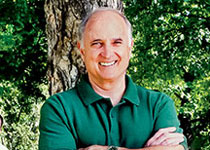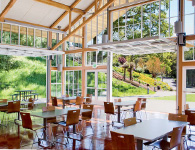Text by Natalya Savka | Photography by Lana Slezic


The face of the Barefoot College is Sanjit "Bunker" Roy, who, in an online TED video, wears traditional white pants (pyjamas), a burgundy shirt that goes down to his knees (kurta), and a vest with shades of brown layered like a geological cross section. He's confident and funny. ("What's the best way of communicating in the world today? Television? No. Telegraph? No. Telephone? No. Tell a woman.") He pauses at all the right times.
Roy has met with the Dalai Lama. He's won the World Technology Award for Social Entrepreneurship and the Sierra Club Environmental Award, among many others. In 2010, Time magazine named him one of the world's 100 most influential people.
Roy was the kind of kid you'd expect to see in Time one day. "I went through a very elitist, snobbish, expensive education in India," he says in the TED video. In 1965, at age 20, he won the first of three national squash championships, was attending St. Stephen's College in Delhi, and had recently graduated from the Doon School, a private boarding academy whose alumni include Rajiv Gandhi (the former prime minister of India) and Rajiv Dutta (the former president of Skype and PayPal).
That year, Roy traveled to Bihar, in northeastern India, to visit a rural village for the first time. He saw the early ugly effects of a drought that had caused a famine and that by 1967 would kill more than 2,300 people. Moved by the devastation, he found work in a water-starved village. He dug wells. "Mother went into a coma," he jokes in the video.
The more rural people Roy befriended, the more he got to thinking that the poor were strong enough and proud enough and good enough to raise themselves out of poverty. He reasoned that if the poor had access to schools that taught them the practical stuff they wanted to know (say, how to power their own villages) instead of what the urban elite thought they should know (say, how electrons and photons interact in a solar panel), they could build simple, self-sufficient, sustainable communities.
So Roy set out to create a rural college that would serve the poor--the 33 percent of Indians who, according to 2010 World Bank estimates, live below the international poverty line of $1.25 a day. In 1972, he opened the Social Work and Research Center--Barefoot College's official title--in an abandoned tuberculosis sanatorium on 45 acres of land that the government leased to the nonprofit for 1 rupee (about 2 cents) a month.
The lease was a short-term agreement. Government officials assumed that the urban college grad would soon flee a village of 2,000 in the desert. Forty years later, he still pays the 1 rupee, and the campus now has a medical clinic, a pathology lab, a library, a media room, a dining hall, a craft shop, a dairy shop, accounting offices, and dormitories whose roofs collectively harvest more than 100,000 gallons of rainwater per year and generate 50 kilowatts of solar energy. The college's 827 solar panels (plus one barrel of backup diesel fuel per month) power 500 lights, 100 fans, 30 computers, a deep freezer, and more. During the nine sunniest months of the year, the college prepares most meals on parabolic solar cookers, which are fabricated on campus by female welders who wear saris and sport geometric henna tattoos.
In the early years, Roy recruited a team of urban professionals to teach Tilonia's men. But the newly educated rural men almost always moved on to higher paying jobs in the city. So he brought in skilled local workers as teachers and began training women instead. "Why not invest in women, older women, mature women, gutsy women who have roots in the village?" Roy said to a CNN reporter last year.
To date, Barefoot College has trained about 15,000 women, most of them previously uneducated, to become teachers, construction workers, water testers, artisans, photographers, dentists, social activists, and solar engineers. The women, in turn, have brought basic services--such as water, light, education, and healthcare--to at least half a million people.
I ask to speak with Roy, but he's not in Tilonia and won't be back for another three weeks. Someone says that he might be at a conference in Australia or maybe in Africa, looking for the next class of solar students. Continue reading >>

Oberlin professor David Orr turns everything emerald.

Ditching the cubicle for a summer outdoors.

Energy efficiency without a big brick box.